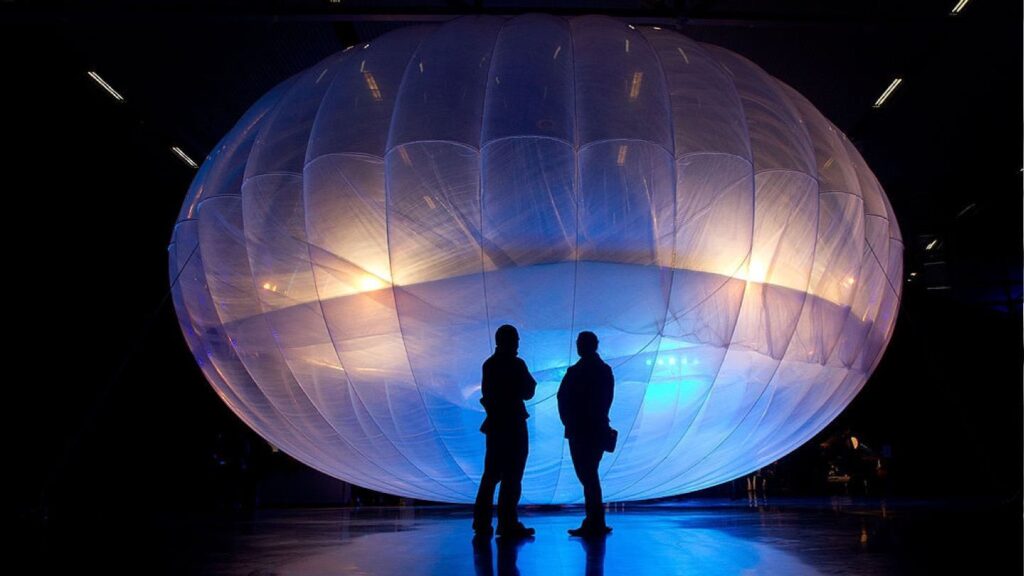Google Loon Balloons: The Story of Loon’s Stay in Africa

The Beginning
What started as an experimental idea in 2011 was officially launched in 2015 by the then Google’s Product chief, Sundar Pichai. At first glance, Google’s loon tech will appear to be a promising tech that provides individuals with the best internet network. Google loon tech was only given a go ahead after several test runs with telecommunication companies. The precise objective of loon was to provide internet connectivity for rural countries. Project Loon, which belongs to Google’s company X, floats balloons up to 20 kilometers (12 miles) above ground to send 4G signals back down to rural areas.
The Scope
8 years ago, an article read that no one could accuse Google of not thinking big. Maybe this assertion was correct because it will take a high level of audacity for anyone to work towards bringing internet connectivity to billions of rural settlers around the world via balloons. African countries-particularly South Africa and Kenya were areas of takeoff in Africa with the intentions of spreading the tech to other rural areas in Africa.
Funding

In 2018, Mike Cassidy who was charged with ensuring the feasibility of the project said that if 5% of the 4.5 billion people without internet access were concentrated on, then the Google Loon project will generate tens of billions yearly in revenue. On the cost side, it cost tens of thousands of dollars to create and make each balloon fly. The project also needed several balloons at once, and each balloon would only last 5 months. To Google, this was an upgrade on the quality of the balloons, as the initial prototypes only lasted a few days.
The variable cost of running the business was accompanied by an unwelcoming market whose unwilling attitudes were due to regulatory hurdles and lack of understanding regarding the nature of the tech. But who could blame them? Google was literally talking about giving them internet with balloons.
Partners
The Loon tech project was to partner with telecommunication companies to go into areas without internet connection and provide them with connection. The Vodacom Group CEO in 2020 claimed that the partnership with Loon was a perfect example of how technological innovations could connect the most rural communities in Africa. In spite of this cheerful statement, this partnership did not last. The pair worked together with Mozambican telecomm companies and aviation regulators.
An article by the International Finance Corporation titled Balloons to Deliver Emergency Internet Across Kenya in 2020 read that “When Mugo Kibati, the chief executive officer of Telkom Kenya, began to understand the magnitude of the COVID-19 pandemic, he looked heavenward for answers, he wasn’t seeking divine intervention, he was searching for balloons. These balloons floating cell sites that hover about 60,000 feet (about 20 kilometers) above ground—are equipped to offer 4G connectivity to about 25 million Kenyans who lack coverage”.
The anticipation of having the tech available in the country caused Kenya’s government to fast track the terms of agreement and by April 21, 2020, internet balloons had arrived Kenya, later that same month, 4 of the 21 balloons were launched into the stratosphere. The Google Loon project partnered with Kenya’s Telkom to ensure that 4G internet services were delivered to some of the most inaccessible areas of the country.
Prior to the aforementioned partnerships, the Google Loon tech project had received $125million funding investment from SoftBank in 2019.
Benefits
The benefits of Loon are clear and indisputable; with internet accessible in more places, a lot more things become accessible to the people there, from education to healthcare. In several African countries, governments have been unable to solve the problem of internet availability and affordability especially in rural areas. At just 22%, Africa ranks as the region with the lowest percentage of internet users (Quartz Africa). This statistic is paradoxical to the fact that African leaders claim to invest huge amounts regularly to address the issue of internet connectivity. The Google Loon project was successful in extending online connectivity in the areas where it was implemented, thereby addressing this issue and bridging the gap between Africans in rural areas, and stable internet connection.
The End?
Projects are never without their own problems. But what can’t a tech giant like Google solve? On October 28, 2020, Loon claimed a record-duration flight of 312 days for a balloon, 85 days later, precisely January 21, 2021, Google announced that it was shutting down the Loon project.
Loon’s CEO Alastair Westgarth announced that the company had failed to get the cost low enough to build a long-term sustainable business. Operations are winding down in Loon outlets around the world and employees will be redeployed to other units.
